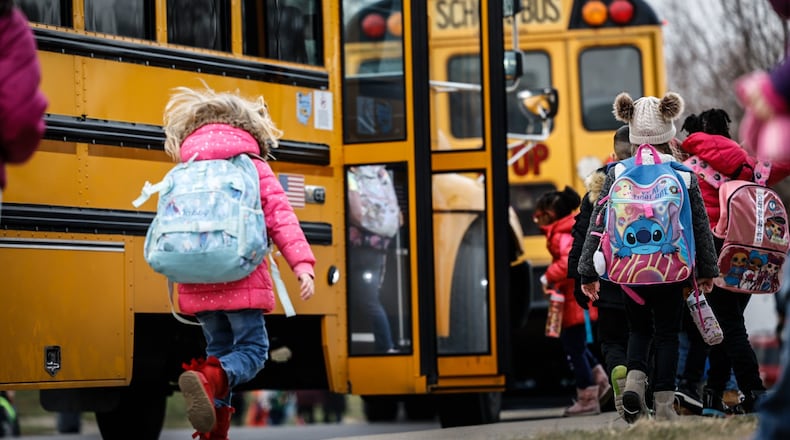Redistricting generally means redrawing the lines of which streets or neighborhoods go to which schools. Some school districts, including Miamisburg earlier this year, have used the process to change their schools by grade level, for example with all K-2 students going to one set of schools, and all grade 3-5 students going to others.
According to Huber Heights Superintendent Jason Enix, the district’s current strategic plan, which broadly outlines goals and priorities for the schools, points to redistricting as one of its action steps. The district wants Cropper GIS to present multiple options.
“We monitor our current enrollment at all buildings every single day, and the elementaries are where we’re seeing these inequities of classes, meaning numbers of kids in our buildings, grade levels, and also in classes,” Enix said during a recent work session discussion on the topic.
Student enrollment at Huber Heights elementary schools varies from 545 students at Valley Forge, where grade level populations range from 70 to 90 kids, to 687 total students at Wright Brothers, where numbers range up to 115 kids per grade level.
The district’s monitoring of student-to-teacher ratios shows there is concern when that ratio is equal to or greater than 26 students per teacher in grades kindergarten through three, and 29 students per teacher for grades four and five.
Three schools have reached this threshold, including Charles Huber, where there are 26 kindergarten students per teacher; Monticello, which has around 27 students per teacher; and Wright Brothers, where there’s an average of more than 28 students per teacher.
The goal, according to the district’s data, is to keep this ratio under 24-1 for kindergarten through third grades, and less than 25-1 for grades four and five.
“There’s a concern about the equity of the size of buildings, and when you have two buildings that are built exactly the same way, but one of them has 545 kids and one of them has approaching 700, the functionality inside that building is different,” Enix said. “That extra number of kids, extra number of staff, and the extra number of everything is different when you have that kind of difference in size.”
Enix said Cropper’s redistricting proposal will cost the district $56,000, will include feedback from the community, and will take into account several factors.
“Part of those planning blocks is trying to keep neighborhoods together and keep natural boundaries together or separate,” he said. “It’s not always possible; sometimes neighbors will be in different schools and that’s just the way it works out, but the idea is to try to create equity and create a more balanced elementary size.”
The redistricting project will also take into account results from a population and enrollment study, completed by Cropper for the district in 2022-2023, which projects enrollment numbers over the next decade.
Enix said the redistricting effort will include community input, noting that the process is in the early stages and details for engagement opportunities will be shared as they are finalized.
About the Author


